
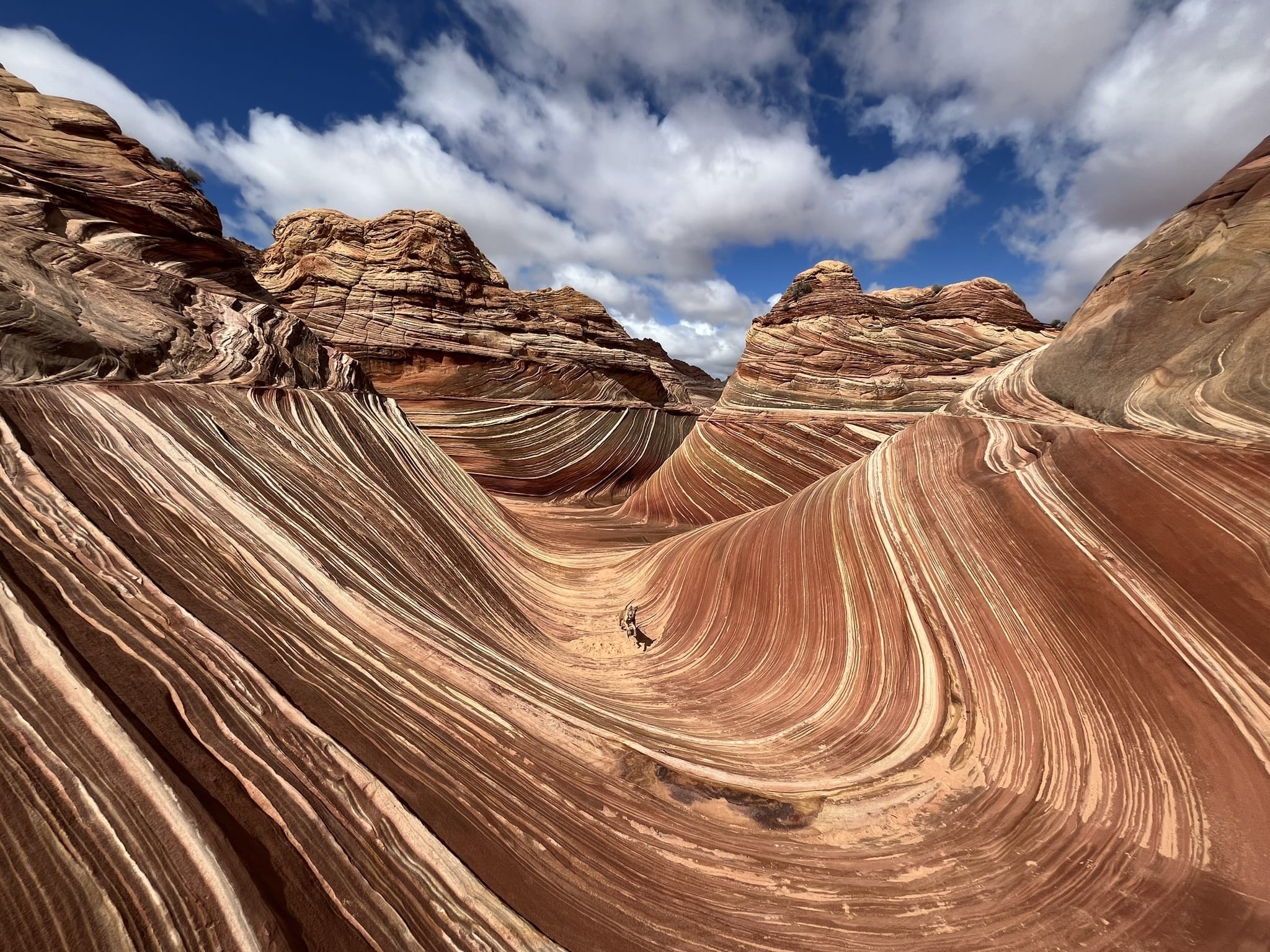
10 The Wave Arizona Boondocking Locations: If you want to experience boondocking near The Wave, you’ve got some great options. These spots let you camp in nature without hookups, so you get a real off-grid adventure close to this iconic sandstone formation.
The best boondocking sites are just a short drive away and offer easy access to hiking and those unreal desert views. Here, you can enjoy some solitude and wildness, but you’re still close enough to hit The Wave by day.
Knowing where to park your rig or pitch your tent makes a huge difference on this kind of trip. I’ll run through ten boondocking sites that work for different vehicles and preferences right near The Wave.
Location And Access
The Wave Boondocking location sits close to the famous Wave rock formation in northern Arizona. Its GPS coordinates are 36.9961° N, -112.0063° W.
You’ll find it tucked inside the Paria Canyon-Vermilion Cliffs Wilderness area. To get there, you really need a high-clearance vehicle.
The roads are mostly dirt and can get rough, especially after rain. Low clearance or two-wheel drive vehicles just aren’t up for it.
Kanab, Utah, is the nearest town—about 25 miles away. From Kanab, head south on House Rock Valley Road, which brings you close to the parking area for the Wave trailhead.
You’ll need a permit to access the Wave trailhead itself. The permit system is a lottery because so many people want to go.
Boondocking nearby usually means camping outside the permit zone. There’s no cell service out here, so you’ll want to prep ahead.
Bring your water, food, and everything else you might need. Here’s a quick checklist for access:
- High-clearance 4WD vehicle
- Wave hiking permit (if you’re visiting The Wave)
- Plenty of water and food
- Good map or GPS device
Make sure your vehicle and supplies match your plans. This area is remote and you won’t find any services.
Directions: How To Get There And What To Expect
Start from Kanab, Utah. Head west on House Rock Valley Road (Bureau of Land Management Road 1065).
Drive about 10 miles until you reach the wire gate at the trailhead parking area. The road’s unpaved and can be rough, so a high-clearance vehicle is the way to go.
Don’t try it after heavy rain—the road gets slick and muddy fast. From the parking area, you’ll hike about 6 miles round trip to The Wave.
The trail isn’t marked, so bring a detailed map or GPS. Expect hot, dry conditions and bring plenty of water.
No cell service out here once you’re on the trail. Tell someone your plan before heading out.
There are no facilities, so pack out all your trash. Here’s a quick reference:
| Tip | Details |
|---|---|
| Vehicle needed | High-clearance, 4WD preferred |
| Trail length | 3 miles one way (6 miles round) |
| Water | Bring at least 2 liters per person |
| Cell service | None on trail |
| Permits | Required for The Wave access |
Wear sturdy shoes and start early to beat the midday heat. The hike is challenging in spots, but you’ll see some truly unique rock formations.
Amenities And Activities
Don’t expect much in the way of amenities when you boondock near The Wave. There’s no cell service or running water at the site.
Bring all your own supplies—water, food, fuel, the works. Bathrooms and trash bins only exist at certain trailheads or ranger stations.
Be sure to pack out all your trash to keep the place clean. The main activity here is hiking.
The Wave draws photographers and nature lovers for good reason. You can explore colorful sandstone and narrow canyons all around.
Other activities? Bird watching, wildlife spotting, and stargazing are all solid options.
The skies are dark and clear at night, so you get fantastic stars. If you just want to chill, you’re surrounded by quiet nature.
No shops, restaurants, or gas stations are anywhere close. Plan to be totally self-sufficient during your stay.
| Amenities | Availability |
|---|---|
| Water | Bring your own |
| Restrooms | At trailheads only |
| Trash facilities | At trailheads only |
| Cell service | Very limited or none |
| Fuel/gas stations | Not nearby |
Bring good gear for both hiking and camping. Weather can change fast, so be ready.
Camping Regulations And Restrictions
You have to camp only in designated areas near The Wave to protect this fragile place. Dispersed camping isn’t allowed inside the monument boundaries.
Permits are required to access The Wave area. Get a valid permit before you camp or hike—the lottery system makes these tough to snag.
Fires are usually not allowed because of fire risk. Use a camp stove for cooking.
Always pack out your trash. It’s critical for keeping the area clean and safe for wildlife.
Pets are allowed but must stay on a leash at all times. This protects plants and animals.
Use only existing campsites if you can. Don’t make new sites or dig holes—leave the land as you found it.
Keep noise low and respect the quiet. Other campers and the wildness itself deserve it.
You can’t stay longer than 14 days in a 30-day period. That way, everyone gets a shot at the experience.
Follow all signs and ranger instructions. They’re there for your safety—and the land’s.
Leave No Trace
When you visit The Wave Boondocking Locations, stick to Leave No Trace principles. This keeps the place wild and beautiful.
Always pack out your trash—food wrappers, batteries, all of it. Don’t bury or burn waste.
Stay on marked trails. Going off-trail can really damage plants and soil.
Let wildlife be. Don’t feed or approach animals; watch from a distance.
Use a portable toilet or dig a hole at least 6-8 inches deep for human waste. Cover it well. Carry out used toilet paper in a sealed bag.
Camp only in designated spots. Don’t cut trees or take rocks or plants.
Follow fire rules strictly. Use a camp stove if you need to cook.
Here’s a quick checklist:
| Action | What to Do |
|---|---|
| Trash | Pack out everything |
| Trails | Stay on marked paths |
| Wildlife | Observe from a distance |
| Human waste | Use toilets or dig small holes |
| Camping | Use designated areas |
| Fires | Use stoves, follow rules |
Respecting these rules helps protect The Wave for everyone who comes after you.
Helpful Information Links
Bureau of Land Management
Recreation.Gov
National Park Service
Arizona Park Service
Arizona Trust
Arizona Fish and Game
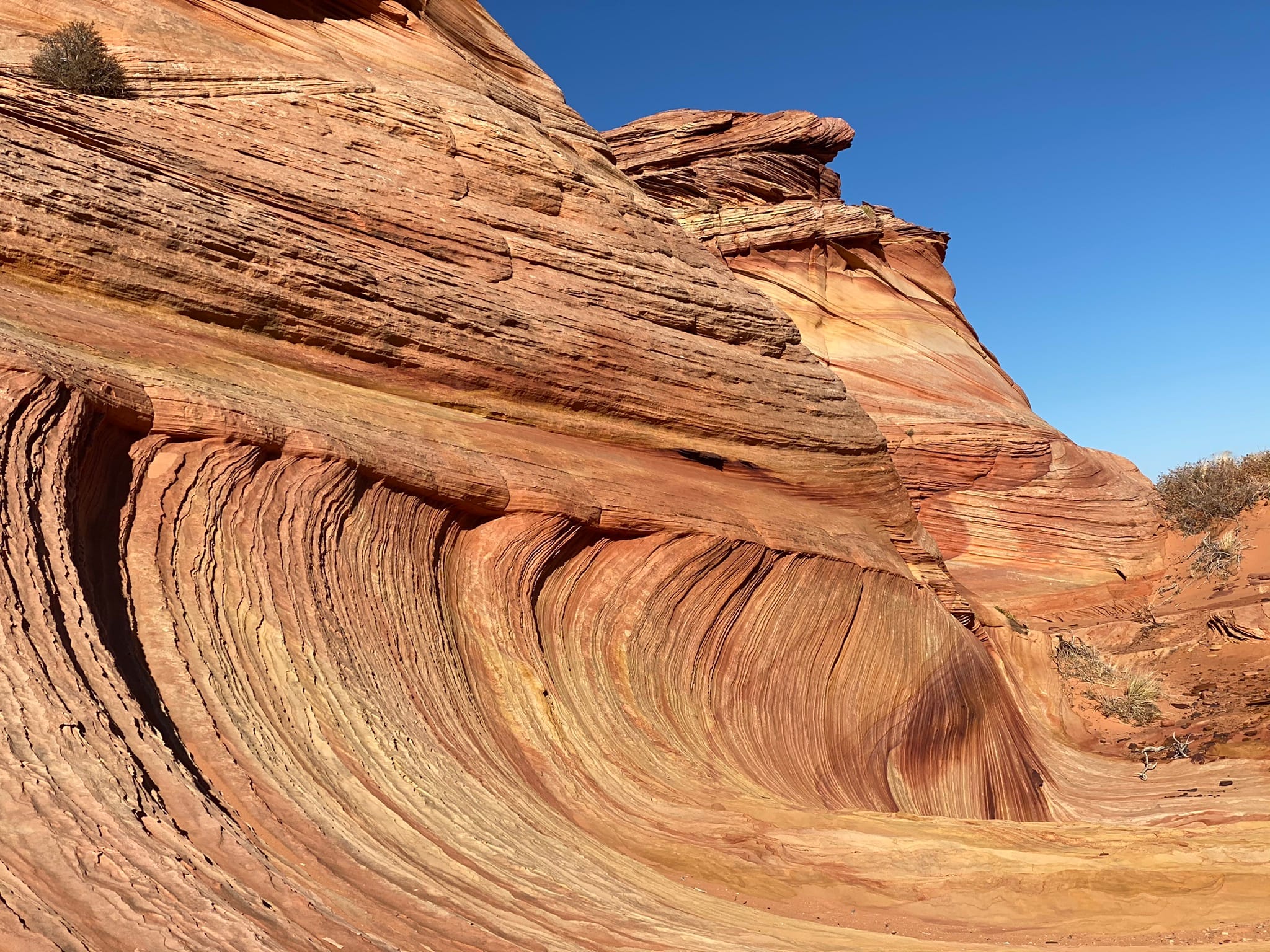
The Wave Arizona Boondocking Locations

Glen Canyon NRA West – Arizona Boondocking
36.994201, -111.60102
Glen Canyon NRA West offers a remote yet scenic boondocking opportunity inside the boundaries of the Glen Canyon National Recreation Area. The location is west of Page, Arizona, and allows campers to immerse themselves in the quiet desert environment. The area consists of open BLM land with views of mesas, sandstone formations, and desert washes.
Things to Do:
This boondocking site serves as a good base for exploring Glen Canyon NRA and nearby Lake Powell. Outdoor enthusiasts can enjoy hiking, off-roading, stargazing, and photography. Given its remote nature, it also offers an escape from the more crowded areas near the lake. Boat launches at Wahweap and Lone Rock Beach are within driving distance, and the region is also home to lesser-known geological features and slot canyons.
Directions:
Use GPS coordinates 36.994201, -111.60102. Access is typically via dirt roads leading west from Highway 89. Some areas may require higher clearance vehicles depending on road conditions, especially after rain.
Vehicle Access:
This site accommodates RVs, vans, and tents, though access roads can be rough and may become impassable in wet weather. There are no amenities on-site, and campers must pack out all waste. Cell reception is spotty depending on the carrier. It’s advised to check weather and road conditions before heading in.
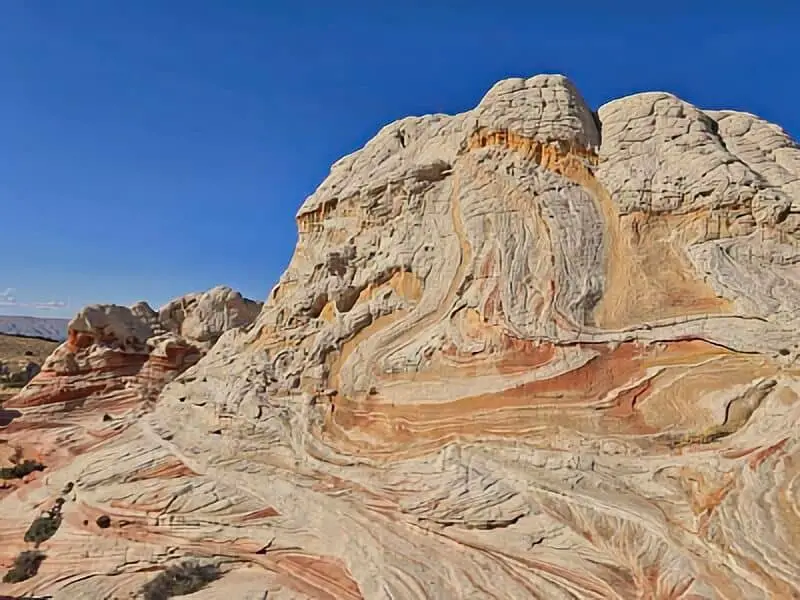
Boondocking White Pocket Campground
36.954567, -111.893695
White Pocket is one of the more remote and visually unique boondocking destinations in northern Arizona. Located on the Paria Plateau within Vermilion Cliffs National Monument, this site provides direct access to incredible rock formations and landscapes that attract photographers and hikers from across the country. The area features swirled sandstone, colored rock mounds, and formations similar to The Wave—without the permit requirement.
Things to Do:
Visitors to White Pocket can explore the surrounding geological formations on foot. Hiking, nature photography, and stargazing are popular activities here. Because of the isolation, the night sky views are exceptional. The region is also home to desert wildlife and offers peaceful solitude for those willing to make the journey.
Directions:
Use GPS coordinates 36.954567, -111.893695. Reaching White Pocket requires traveling through deep sand and rough roads. A high-clearance, four-wheel-drive vehicle is absolutely necessary. There are no road signs, and GPS service may be unreliable, so paper maps or downloaded directions are recommended.
Vehicle Access:
Access is limited to high-clearance 4WD vehicles. This location is not suitable for large RVs or standard vehicles. There are no amenities, and all campers must be fully self-contained. Because of its remoteness, visitors should carry extra water, food, and emergency supplies. Weather conditions can change quickly and impact access roads.
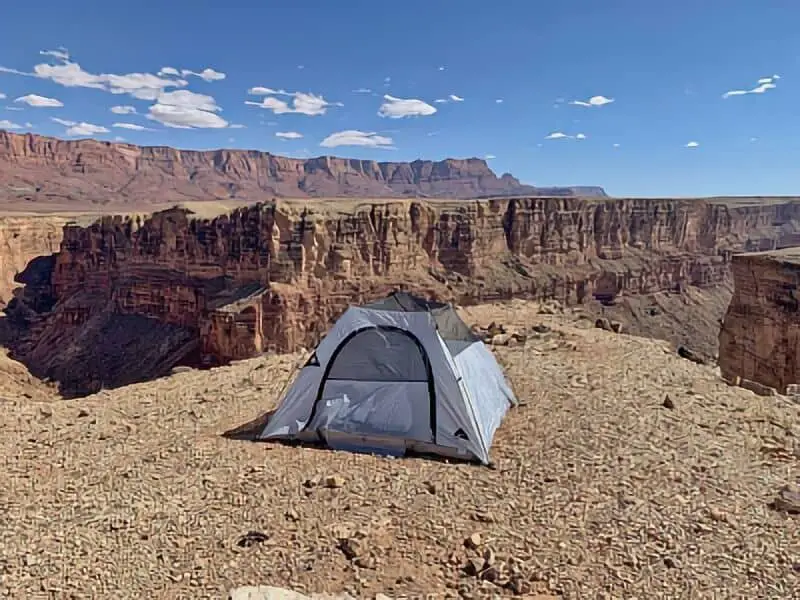
Badger Creek – Marble Canyon Boondocking
36.77642, -111.659206
Badger Creek offers a secluded and quiet boondocking area just outside of Marble Canyon, Arizona. This location is tucked away on BLM land near the Navajo Bridge and the Colorado River. The terrain is wide open and mostly flat, making it suitable for RVs and tent campers seeking privacy and expansive desert views.
Things to Do:
Nearby attractions include Marble Canyon, Lee’s Ferry, and the Colorado River. Visitors can enjoy hiking, birdwatching, photography, and fishing. Lee’s Ferry is a well-known starting point for rafting trips into the Grand Canyon. The surrounding Vermilion Cliffs create a striking backdrop for outdoor activities and relaxation.
Directions:
Use GPS coordinates 36.77642, -111.659206. Access is via dirt roads branching off Highway 89A. Roads are generally passable with regular vehicles, but recent weather can impact conditions.
Vehicle Access:
Accessible by cars, vans, and smaller RVs, though large rigs should scout ahead due to narrow sections. The surface is a mix of dirt and gravel. There are no facilities, so campers must bring all needed supplies and be prepared to leave no trace. Cell reception varies, but is generally fair near the highway.
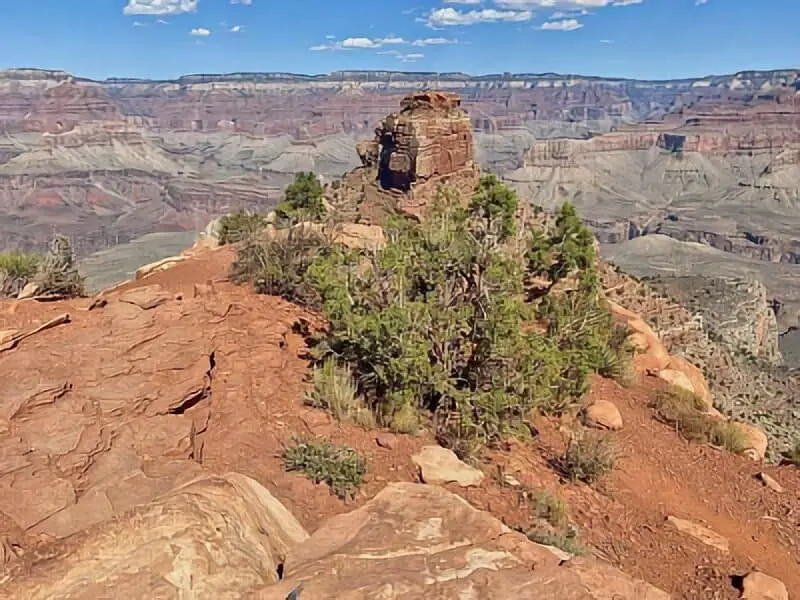
Marble Canyon Overlook – Arizona Boondocking
36.752823, -111.681285
The Marble Canyon Overlook boondocking area offers dramatic views of the canyon and Colorado River. This site is perched along the canyon rim and provides one of the most scenic free camping options in the region. Though primitive, the overlook is a favourite among photographers and campers seeking solitude with a view.
Things to Do:
The overlook offers access to scenic drives, hikes along the rim, and exploration of the Marble Canyon corridor. Visitors can take day trips to Lee’s Ferry, Navajo Bridge, and the Vermilion Cliffs National Monument. The area is excellent for sunrise and sunset photography, and the high vantage point provides panoramic views of the river gorge.
Directions:
Use GPS coordinates 36.752823, -111.681285. Access is via a dirt road off Highway 89A. While the road is passable for most vehicles in dry conditions, it can become slick and impassable after rain.
Vehicle Access:
Best for vans, small RVs, and tents. Larger vehicles may find limited turning space near the canyon edge. The site has no amenities and no shade, so campers should be prepared for full self-sufficiency. Campers must practice caution due to the proximity to steep drop-offs and lack of barriers.
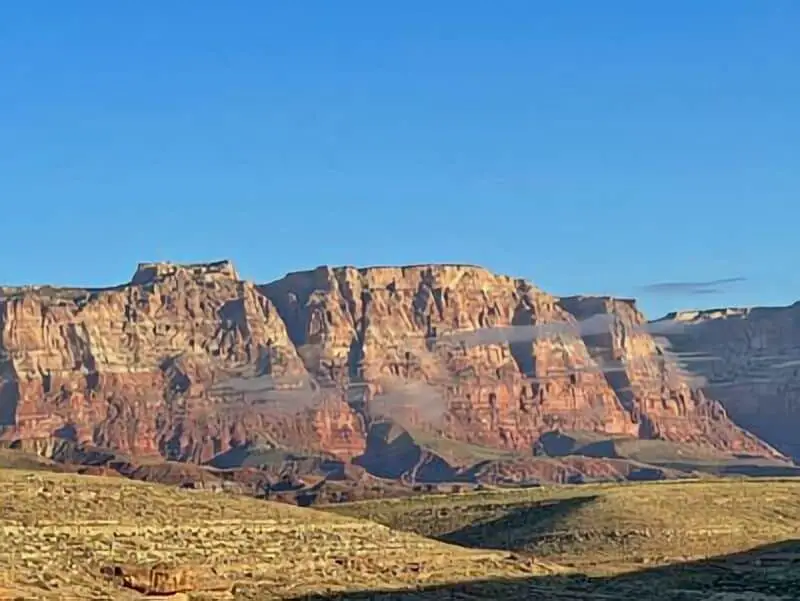
Boondocking Vermilion Cliffs – Marble Canyon
36.75014, -111.71654
The boondocking area near Vermilion Cliffs and Marble Canyon offers sweeping views of some of Arizona’s most distinctive desert landscapes. Located along House Rock Valley Road just off U.S. 89A, this dispersed camping site sits in a quiet, remote setting with Vermilion Cliffs towering in the background. The location is part of the larger Vermilion Cliffs National Monument and lies not far from the Paria Plateau and the beginning of the Grand Staircase.
Things to Do:
This spot makes an ideal base for exploring nearby natural attractions such as the Navajo Bridge, Lee’s Ferry, and Marble Canyon. Hikers and off-roaders may also be interested in visiting White Pocket or trying to obtain a permit to hike The Wave. Wildlife viewing is common in this region, especially sightings of California condors, which are being reintroduced to the area. Sunrise and sunset bring vivid colours to the cliffs, making it an excellent location for photography and nature watching.
Directions:
Use GPS coordinates 36.75014, -111.71654. Access is via House Rock Valley Road, a dirt road off Highway 89A between Marble Canyon and Jacob Lake. The road is usually passable for most vehicles when dry but can become impassable after rain. Always check current conditions before setting out.
Vehicle Access:
This boondocking area is suitable for vans, 4WD vehicles, and small to mid-sized RVs. Larger rigs should proceed with caution, especially if weather has recently impacted road conditions. There are no amenities—no water, no toilets, no trash removal—so campers must be fully self-contained. Cell service is limited to non-existent in most areas, so plan accordingly. This is a true off-grid experience surrounded by open desert and towering red rock cliffs.

NF Road 482 Jacob Lake – Arizona Boondocking
36.734933, -112.199533
NF Road 482 offers dispersed camping options within the Kaibab National Forest, located just northeast of Jacob Lake, Arizona. This area provides a free alternative for campers seeking quiet forest surroundings near the North Rim of the Grand Canyon. The road is surrounded by mature ponderosa pines and open meadows, creating shaded, level sites ideal for RVs, vans, or tent camping.
There are no developed amenities—campers must bring their own water and pack out all trash. Cell signal varies but is generally weak. The elevation is around 8,000 feet, which makes the site cooler in summer months and potentially snowy in late fall or early spring.
Things to Do:
This location provides easy access to the Kaibab Plateau, Jacob Lake recreation area, and a short drive south to the Grand Canyon North Rim (approximately 45 miles). Wildlife such as deer and elk are often seen, and hiking trails are accessible throughout the forest.
Directions:
From Jacob Lake, head east on Highway 89A and look for NF Road 482. The entrance to the dispersed camping area is marked by a dirt turnoff. GPS: 36.734933, -112.199533.
Vehicle Access:
Forest Road 482 is dirt and may have washboard sections. It is generally accessible for most vehicles in dry conditions. High-clearance is recommended during wet weather. Sites are set back from the road for quiet camping. Not suitable for large motorhomes beyond the first half mile.

FR 212 – Fredonia Boondocking
36.617361, -112.245416
Forest Road 212 provides free, dispersed camping opportunities in the Kaibab National Forest near Fredonia, Arizona. Located southwest of town, this area offers quiet, wooded boondocking spots that are often used by hunters, hikers, and travelers passing through the region. It sits at a moderate elevation and provides ample shade thanks to its tall pine cover.
There are no services at this site—no toilets, no trash removal, and no water sources. Campers should plan to be entirely self-sufficient. Campfires may be allowed depending on seasonal restrictions, but check with the Kaibab National Forest office before lighting any fire.
Things to Do:
The surrounding forest is known for its wildlife and birdwatching opportunities. Hiking, mountain biking, and ATV use are common in this section of the Kaibab. It’s also used as a staging area for North Rim visits or excursions into the Arizona Strip region.
Directions:
From Fredonia, head south on Highway 89A and take the signed turnoff for FR 212. Dispersed campsites are available along the dirt road. GPS: 36.617361, -112.245416.
Vehicle Access:
FR 212 is dirt and typically well-graded but may become rutted after rain. Smaller RVs, trailers, and vans can navigate it without issue in dry conditions. Avoid after snow or storms due to mud. Quiet, shaded, and well-separated sites make it ideal for longer boondocking stays.

Jacob Lake – Arizona Boondocking
36.708215, -112.236567
This dispersed camping area is located just south of Jacob Lake, offering free forest boondocking in Kaibab National Forest. While close to amenities at Jacob Lake Lodge and the intersection of Highways 89A and 67, the campsites feel remote thanks to the dense pine canopy and distance from traffic noise.
The area has no established sites, but campers can choose from numerous flat clearings set back from the forest road. This location is ideal for those looking to visit the North Rim without staying at developed campgrounds. Cell signal is limited. No services—bring your own supplies.
Things to Do:
The site is an excellent base for exploring the North Kaibab Plateau and the Grand Canyon’s North Rim. Hiking, nature photography, and wildlife observation are common activities. It’s also used by hunters and overlanders in summer and fall.
Directions:
From Jacob Lake, travel south along Highway 67. Look for dirt road access near GPS: 36.708215, -112.236567. Dispersed camping begins shortly after entering forest service land.
Vehicle Access:
The roads are unpaved but generally passable for most vehicles. Sites closer to the highway are easier to reach with low-clearance cars, while deeper sites are better for high-clearance vehicles. Seasonal weather may limit access—check road conditions before arrival.

FSR 258A – Jacob Lake Boondocking
36.731555, -112.181293
FSR 258A is a dirt spur located east of Jacob Lake within the Kaibab National Forest. This free boondocking area offers a secluded setting with flat, shaded campsites surrounded by pine trees. It is lesser-known compared to other Jacob Lake sites, making it suitable for quiet, off-grid camping.
There are no amenities, and campers should plan accordingly. No toilets, water, or trash removal are provided. Fire bans may apply, so check with forest authorities before having an open flame. Cell signal is unreliable.
Things to Do:
Nearby attractions include the Jacob Lake recreation area, scenic drives through Kaibab Plateau, and access to the North Rim of the Grand Canyon. Hiking, wildlife viewing, and ATV use are also common. Fall is especially scenic with changing foliage.
Directions:
From Highway 89A, head east of Jacob Lake and look for the entrance to FSR 258A. GPS: 36.731555, -112.181293. Dispersed camping spots begin shortly after entering the forest road.
Vehicle Access:
This road is narrower and less maintained than other nearby forest roads. High-clearance vehicles are recommended. Larger RVs may have difficulty turning around. Best for vans, small trailers, or truck campers.

Kaibab Forest – FSR 225 – Arizona Boondocking
36.726663, -112.174015
Located southeast of Jacob Lake, Forest Service Road 225 (FSR 225) is a free-use boondocking area nestled deep in the Kaibab National Forest. This location offers shaded campsites under tall pines and minimal vehicle traffic due to its remote position. It’s popular with campers seeking solitude and access to outdoor trails.
The sites are dispersed with no formal markings or services. You’ll need to bring all water, food, and waste disposal options. Fire restrictions often apply, especially in dry months.
Things to Do:
This part of Kaibab is ideal for dispersed recreation. Campers use it as a launch point for day trips to the North Rim, wildlife viewing, and forest exploration. The forest is home to mule deer, wild turkeys, and occasional elk. Birdwatching is popular in the summer.
Directions:
Access FSR 225 from Highway 89A, following signage near Jacob Lake. GPS: 36.726663, -112.174015. The road may not be well-marked, so GPS guidance is recommended.
Vehicle Access:
The road is unpaved and may be narrow in sections. High-clearance vehicles are best. Not suitable for large Class A RVs. 4WD may be helpful after rain. Most sites are shaded, private, and surrounded by quiet forest land.
Frequently Asked Questions
You need a permit to camp near 10 The Wave. Safety comes down to preparation, knowing the weather, and sticking to marked trails.
Rules protect the area and your experience. Timing matters for weather and access. Facilities are basically non-existent. Pet owners, keep a close eye on the rules.
What are the required permits for boondocking in the ’10 The Wave’ vicinity?
You’ll need a permit from the Bureau of Land Management (BLM). Permits are limited and you often have to apply ahead. No overnight camping is allowed without this permit.
How can I ensure my safety while boondocking near ’10 The Wave’?
Bring enough water and food for your whole stay. Check weather before you go. Always stick to designated trails so you don’t get lost or harm the area.
Are there any specific regulations to be aware of when camping at ’10 The Wave’ location?
You have to camp at least 500 feet from water sources and trails. Campfires aren’t allowed in this fragile area. Leave no trace—pack out all your trash and belongings.
What is the best time of year to go boondocking at ’10 The Wave’?
Spring or fall is best when the temperature’s mild. Summers get dangerously hot, and winters can bring snow or ice.
What facilities are available for boondockers at ’10 The Wave’ location?
There aren’t any developed facilities like water or restrooms. You’ve got to be fully self-sufficient and bring everything you need.
Can I bring my pet while boondocking at ’10 The Wave’, and what are the guidelines?
You can bring your pet along, but there’s a catch—they’ve got to stay on a leash at all times.
It’s up to you to clean up after your pet. Please make sure your furry friend doesn’t bother wildlife or other folks hanging around.
